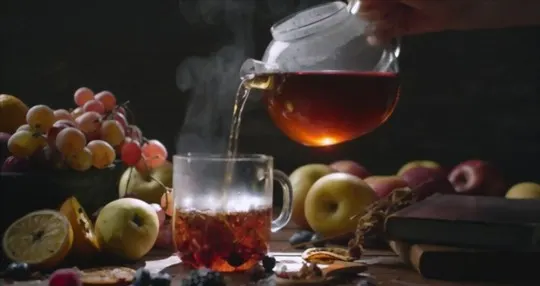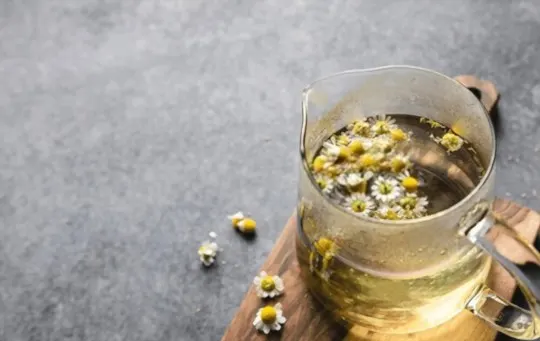Ever sipped a cup of what you thought was tea, only to find out it’s technically not tea at all? Yep, we’ve all been there. Tea comes from the Camellia sinensis plant, anything else steeped in hot water? That’s a tisane.
Trust me, we were just as baffled as you are right now. This mix-up is more common than socks disappearing in the laundry.
We’ve had our fair share of “tea” times, only to learn we were cozying up with a tisane. It’s a whole different ballpark.
Let’s clear the air. No more mix-ups. Welcome to the straightforward scoop on Tea vs Tisane.
What is Tea?

Tea is a popular beverage consumed globally, and its complexity goes beyond its brewing process.
It comes from the Camellia sinensis plant and comprises six types: white, green, yellow, oolong, black, and pu-erh teas.
The entire spectrum exists as a result of various processes during harvesting and preparation.
Generally, tea contains caffeine and antioxidants that have numerous health benefits when consumed moderately.
Thus, its production stretches back centuries across different cultures worldwide.
Although both beverages are poured similarly hot with a purpose of refreshment or therapeutic value tisanes are technically not “real” teas as they don’t originate from the Camellia sinensis plant like brewable teas do but rather plants infused in water with possible medicinal benefits providing unique flavor profile options for tea-lovers everywhere.
What is Tisane?

Tisane, also known as herbal tea, is a beverage that is not made from traditional tea leaves.
Instead, it is derived from herbs, fruits, flowers, and other plant materials.
These ingredients are steeped in hot water resulting in an infusion that can be enjoyed hot or cold.
Many tisanes are caffeine-free and offer various health benefits due to the antioxidants and phytochemicals found in certain plants.
Tisanes have been enjoyed for centuries for their medicinal properties and unique flavor profiles.
Differences Between Tea and Tisane

When it comes to distinguishing between tea and tisane, there are some fundamental differences that should be noted.
Tea refers exclusively to the leaves of Camellia sinensis, while tisanes can be made from a variety of other herbs and plants.
Tea also contains caffeine, whereas most tisanes do not.
Additionally, different types of tea have their own unique flavor profiles, whereas tisanes are more about the benefits derived from the chosen plant or herb.
It is important to note these differences when selecting which beverage to enjoy.
Origin
Tea and tisanes have distinctive flavor profiles and origins.
While tea comes from the Camellia sinensis plant, the foliage, roots, and flowers of other plants are brewed to create tisanes.
These non-tea herbal infusions have been consumed for centuries by various cultures worldwide.
Tisanes may contain caffeine or be naturally caffeine-free, depending on the herbs used in their preparation.
Their popularity continues to soar due to their health benefits and easy preparation methods.
Ingredients Used
Various plant-based ingredients are used in differentiating tea from tisane.
For example, black, green, oolong and white tea leaves come from the Camellia Sinensis plant, while tisanes are made using various herbs, fruits and spices.
These two categories of beverages not only differ in their ingredient sources but also in their preparation methods and nutritional values.
Infusing dried plant parts (leaves, stems, roots, flowers) using hot water is called making tea.
The traditional way of preparing tea involves boiling water and immersing tea leaves into it for a few minutes before straining.
While on the other hand, tisanes can be consumed by steeping various plant-based ingredients like herbs, fruits or spices using hot water just like tea.
Such drinks do not contain caffeine but can highlight specific health benefits depending on their ingredient composition.
In contrast to teas that originate from the same plant family (Camellia Sinensis), tisanes can be made up of mixed and diverse ingredients with varying nutritional values.
Tisanes are linked with detoxification properties based on its combination of healthy ingredients, while in comparison regular teas have more consistent flavor profiles due to being made from only one type of leaf.
Processing Methods
The processing methods of tea and tisane are distinct and determine their taste, aroma, and properties.
Tea undergoes oxidation, which involves fermenting and drying the leaves.
In contrast, tisanes involve steeping various herbs like chamomile or mint in hot water to extract the desired qualities.
While both tea and tisanes can be consumed for their health benefits, they differ in their caffeine levels due to varying processing methods.
Caffeine is naturally present in tea leaves but not in most herbs used for tisanes.
Moreover, as tea leaves oxidize over time, the caffeine content decreases.
It’s essential to understand these differences between tea and tisane processing methods to enjoy a cup of your favorite beverage better.
Regardless of your preference between the two, they are both suitable beverages for any occasion.
Flavor and Taste
The difference between the flavor and taste of tea and tisane lies in their composition.
Tea, derived from the Camellia sinensis plant, has rich, full-bodied flavors such as earthy, floral or smoky notes depending on its type.
On the other hand, a tisane is naturally caffeine-free and made from blending herbs, spices, and fruits to create unique taste profiles like sweet or sour.
The diverse range of ingredients can produce distinct tastes suited to individual preferences.
Similarities Between Tea and Tisane
Tea and tisane have some commonalities worth noting.
Both can be consumed as hot or cold beverages and come in a variety of flavors, including fruity, floral, and herbal blends.
Moreover, they both offer numerous health benefits, such as reducing stress, boosting immunity, and aiding in digestion.
However, it’s essential to understand the differences between tea and tisanes before adding them to your diet.
Caffeine Content Comparison
A comparison of the caffeine content between tea and tisane reveals interesting findings.
While tea, particularly black, green and white tea, has high quantities of caffeine, tisanes are naturally caffeine-free.
This means that individuals who wish to avoid caffeine or limit their intake can opt for tisanes instead of tea.
It’s important to note that decaffeinated teas still contain small amounts of caffeine, compared to tisanes which have none.
Health Benefits and Uses of Tea and Tisane

Tea and tisane are beverages enjoyed for their taste and health benefits.
They possess different characteristics and come from various plant sources.
Exploring the health benefits and uses of these drinks can provide valuable insights into their effects on the body.
- Tea has been known to reduce the risk of heart disease, cancer, and stroke.
- Tisanes are useful in treating digestive issues, anxiety, insomnia, and headaches.
- Tea provides caffeine, which can enhance mental alertness while reducing stress levels.
- The natural substances and antioxidants found in tisanes support immune function, fight inflammation, and improve skin health.
- Both tea and tisanes can be used to promote relaxation or boost energy levels.
It is essential to note that certain teas such as green tea contain high levels of catechins that contribute to weight loss.
Additionally, some tisanes such as chamomile tea have sedative properties that make them effective sleep aids.
Understanding these benefits allows individuals to incorporate tea or tisane into their diet more effectively.
By knowing the unique properties of each beverage type, one can experience positive effects on physical health while also satisfying taste buds with delicious flavours.
Brewing Techniques for Tea and Tisane
Brewing Tea and Tisane both require specific techniques for optimal taste.
Understanding the differences is crucial.
Boiling water is essential for tea, while tisanes require different temperatures, steeping time, and methods.
Water temperature affects tisanes’ flavour greatly and infusing herbs with hot but not boiling water gives a milder tasting tisane.
Herbal teas like chamomile or mint are not technically teas, rather a blend of dried flowers or leaves infused in hot water.
Knowing when to add herbs, how long to steep for, and straining all takes practice.
Conclusion
The fundamental difference between tea and tisane lies in their ingredients.
Tea is made using the leaves of the Camellia sinensis plant while tisanes are created by steeping herbs, flowers, and spices in hot water.
Although both can be enjoyed hot or cold, they have distinct flavor profiles and health benefits.
While tea contains caffeine and antioxidants that promote mental alertness and heart health respectively, tisanes have a range of medicinal properties such as aiding digestion, reducing inflammation, and improving sleep quality.
It is essential to understand the differences between tea and tisane to make an informed choice when selecting a beverage that suits your preferences and needs.

Leave a comment